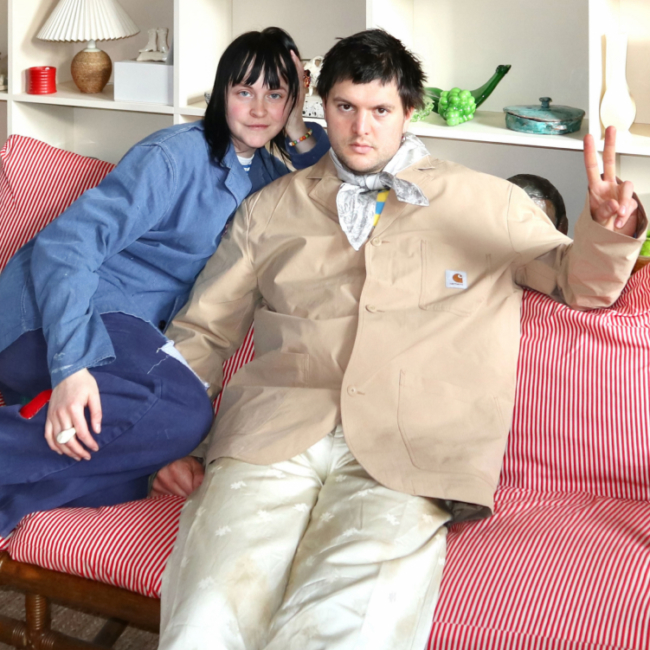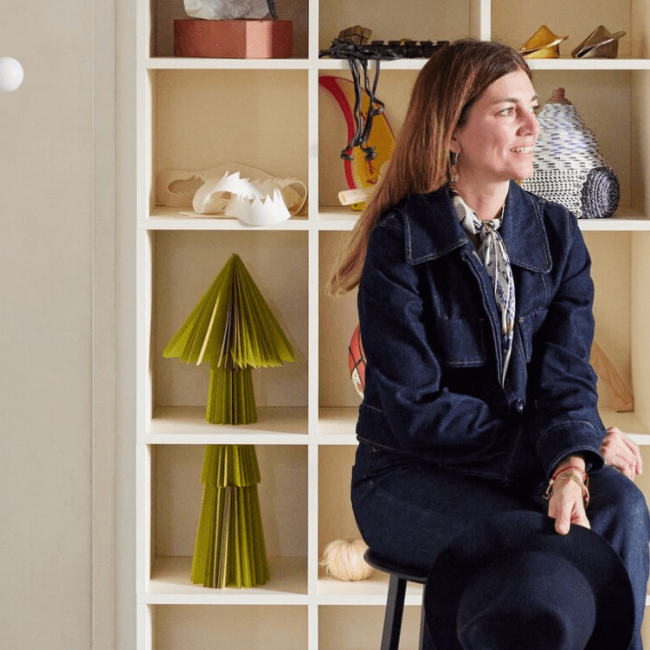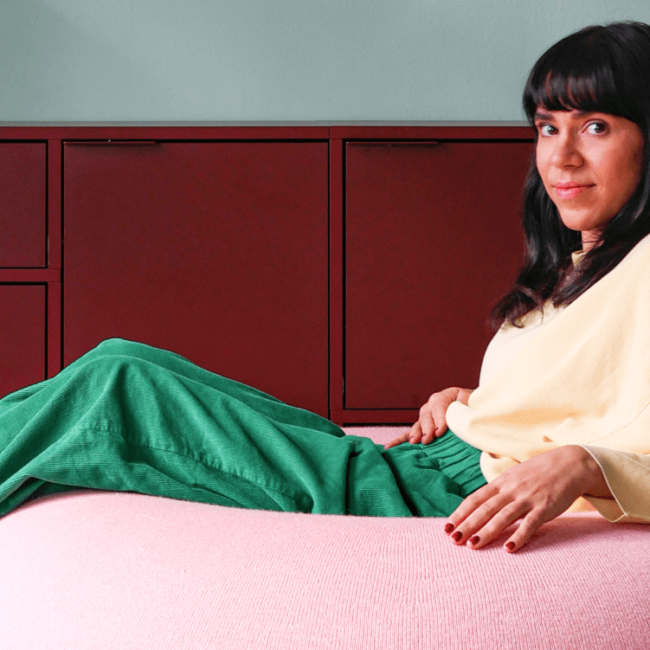October 03, 2019
UAU Project: The Warsaw Studio Bringing 3D Design to the Home
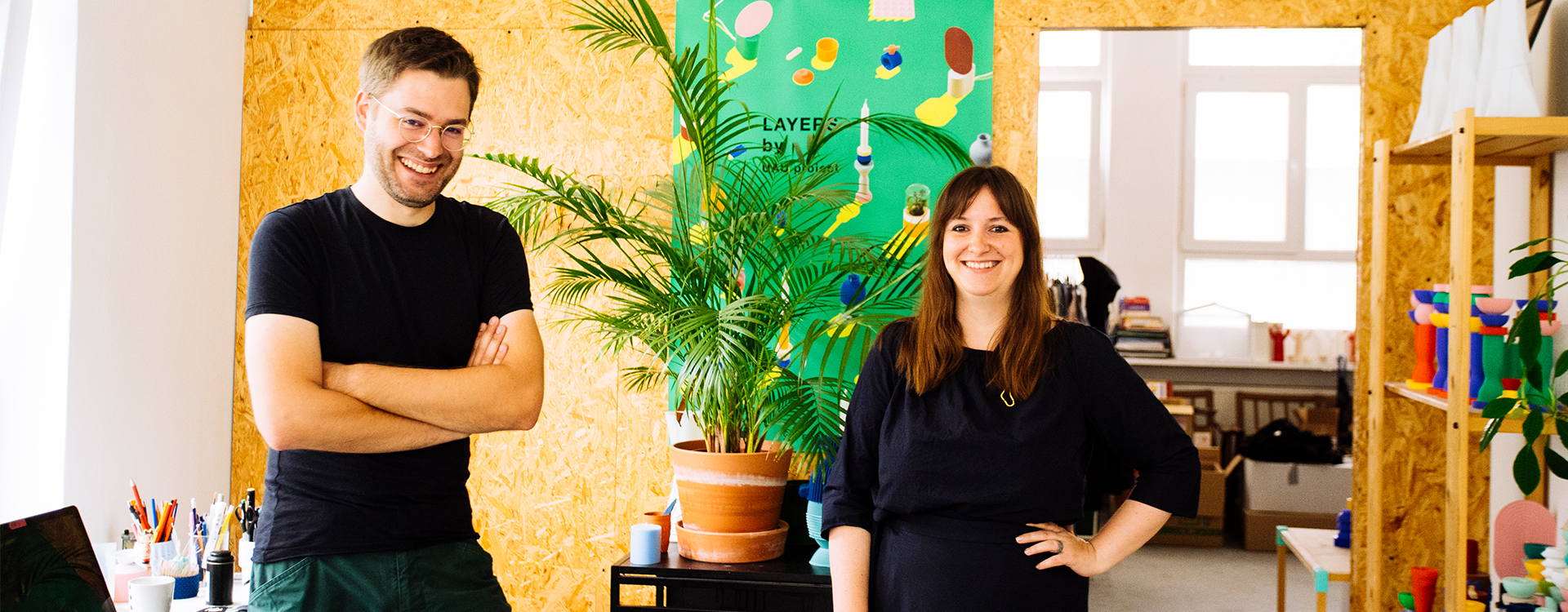
Homewares head into the future as UAU Project inject fun and full-on colour into their striking range of 3D printed goods.
Striving to stay one-step ahead, Justyna Fałdzińska & Miłosz Dąbrowski of UAU Project discovered the limitless possibilities of 3D design and have never looked back. Taking this ever-evolving technology and applying it to a vivid range of modernist homewares, the Warsaw-based duo have worked hard to make this complex process as accessible as possible. While “printing” beautiful objects may seem like a digital magic trick, the advantages of this exciting medium go way beyond novelty; for Justyna and Miłosz this is the future of sustainable, responsible, global-minded design. We step inside their sunny studio to find out more.

Tell us about your backgrounds, what did you study and how did you meet?
Justyna: We both grew up in Warsaw and met after high school.
Miłosz: And then we both went to the Academy of Fine Arts in Warsaw to study at the Industrial Design Faculty.
What first attracted you to product design and what is it about the industry that you love?
J: Creating functional products but also unique objects is very exciting.
M: Well for me it was a passion for tinkering with things, seeing how they work and thinking about how they could be better. And then you start sinking into this amazing world of endless possibilities of creations. It’s just fun to design new stuff.
How would you describe your working relationship? What are the individual strengths that you bring to your work?
J: At the beginning it was quite hard, because we are both very confident and tried to argue about whose side is better but now we work as one organism, we have similar views on most things.
M: Well, you’re still better with colours 🙂 Not that I’m colour blind 😉
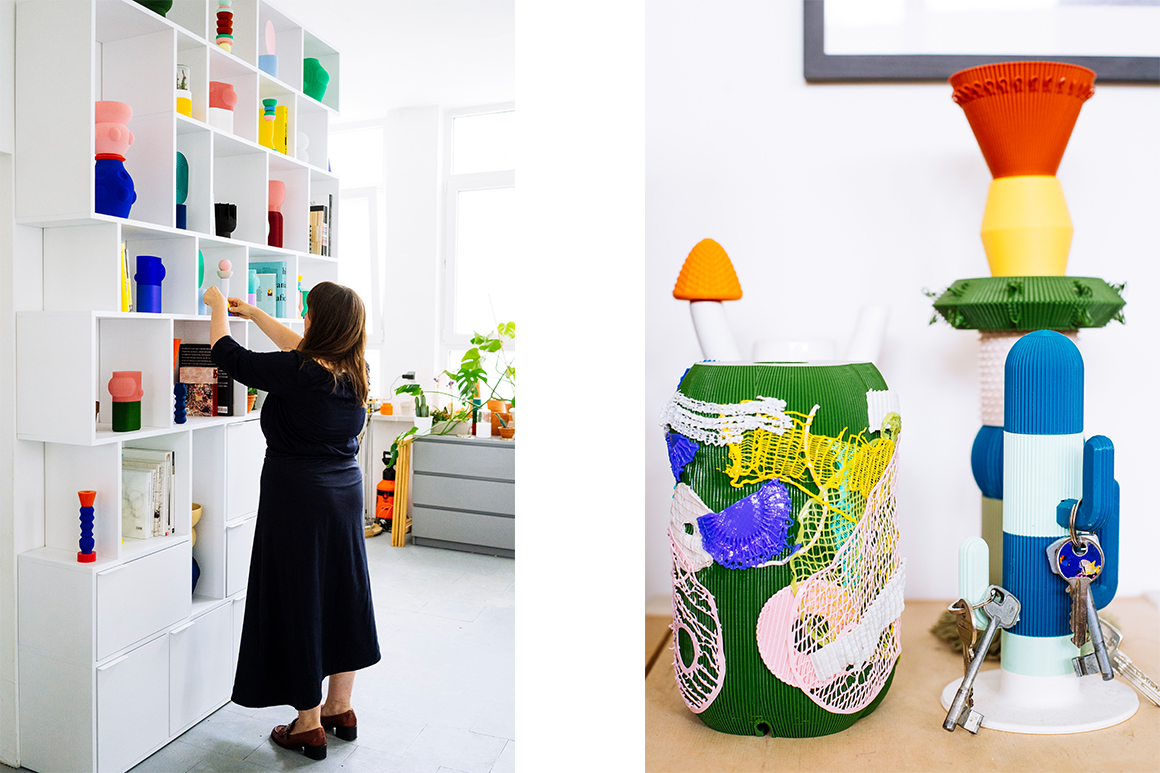
And do you always agree on the direction of a project?
J: Sometimes we have to agree on a compromise. But we never feel that one has lost to the other. Mostly we agree on everything.
M: Yes, nowadays we don’t spend much time on sketching our ideas, we just brainstorm, find the perfect design, discuss it and then it’s straight to 3D modelling.
Who are your design heroes and why?
J: Where to start! I think my biggest design heros are Gae Aulenti and Gio Ponti but I’m inspired by many more. I love Aulenti for her imagination and willingness to change the world and Ponti for his sense of humor and attention to detail.
M: We also both love Ettore Sottsass and Hella Jongerius.
You specialise in 3D design, what are the advantages of working in this medium?
J: The main advantage is that you get the product immediately, you don’t have to wait for the prototype for ages. I’m very impatient!
M: It’s fast, and if you’re good at it, you’re able to work with the computer almost as one.
How do you see the future of 3D design?
M: I think soon we’ll have an opportunity to manufacture our products locally all around the world with the same quality, so distributed manufacturing will be the future of all products, I hope. Shorter shipping means less carbon footprint. Local manufacturing means more work for local people. I also hope that 3D printers will be easier to operate for less technical people. Of course it will also be faster and more accurate and use more recycled materials (which we already use, but it’s not the industry standard).
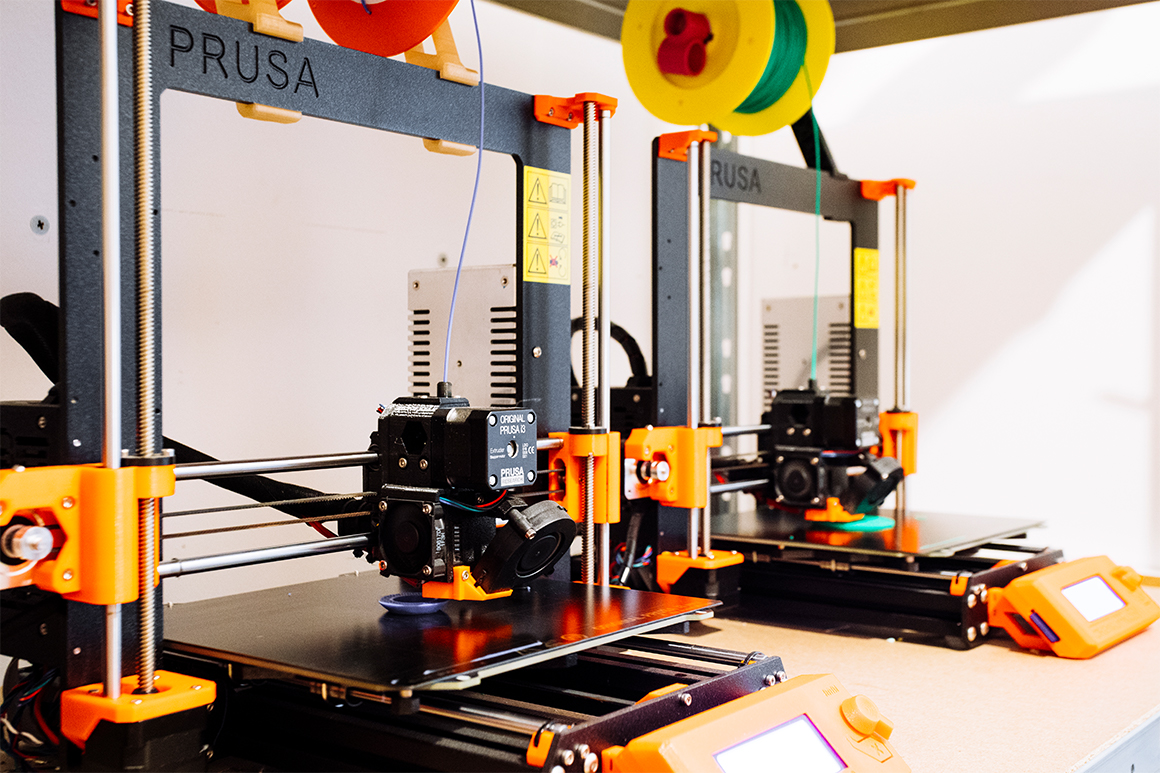
There’s a lot of experimentation in your work – how do you deal with making mistakes?
J: I would say almost all our work is an experiment. Sometimes something unusual happens and we think it’s so cool that we implement it in our design.
M: Yes, carefully observing how the mistakes took place in the past gave us a lot of knowledge on how to use them in our designs. With every new product we experiment with the algorithms, forms, colours and errors 🙂
Colour seems to play a crucial role in your products, can you explain its significance in your work?
J: Maybe it’s because at the beginning there weren’t so many material colours to choose from and so when we found our supplier and could choose from 100 colors we decided not to limit ourselves! But seriously, we love to work with colour, it’s one of the most pleasant things to choose the right colour way for each project. We switch the palettes when we get bored.
Texture seems to be equally important, is the feel of an object a big part of its appeal for you?
M: For me it’s crucial. Every object we design must have its weight and feel. And all of them are really pleasant to touch. It’s come to a point in our lives where we’re surrounded by cold, flat surfaces, be it smartphones, all kinds of screens, cars – so we’ve decided to add some texture to the world 🙂
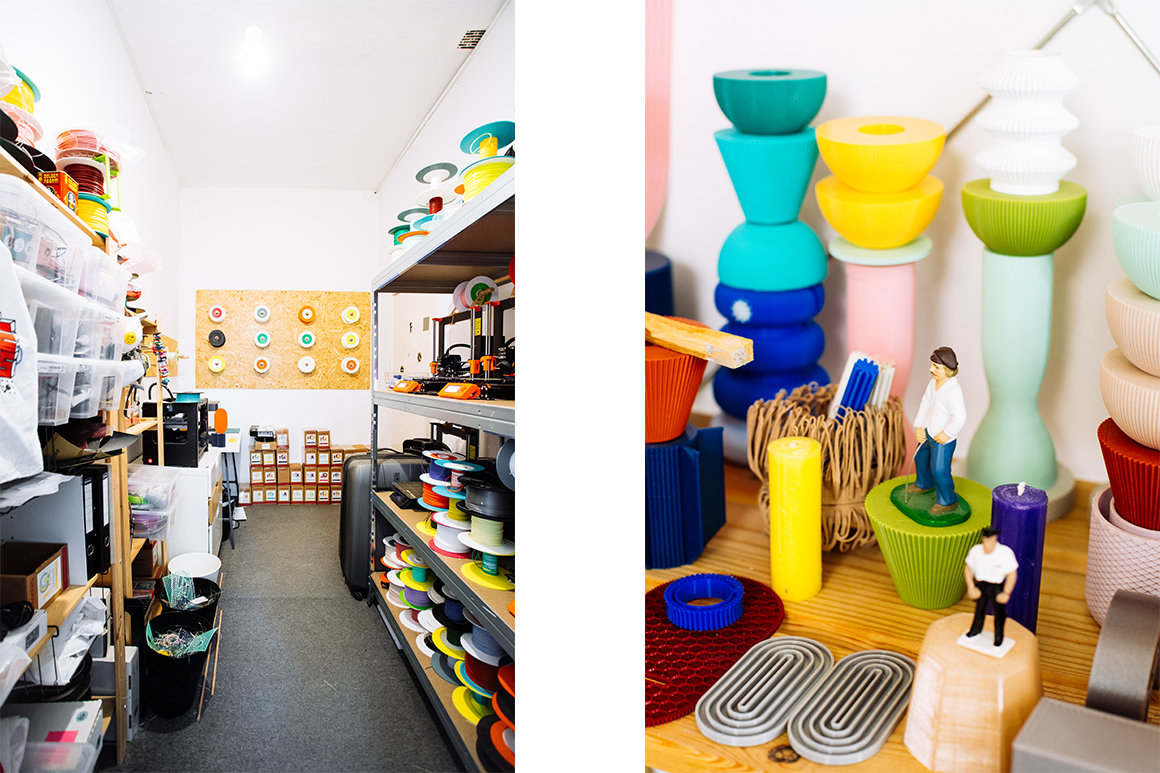
How much of your work aesthetic can be found in your homes?
J: We try to keep it simple, but we have a few crazy colourful vases. Also we place books in colour order. We also like plants and love to visit flea markets to find weird objects.
M: A few colourful vases? We don’t have enough space left at home for them, so we started to bring some to our studio! They work great together with our products.
Talk us through the process of working on a new project from start to finish – does it begin with solving a problem? Or perhaps wanting to create something beautiful…?
J: We don’t really solve problems, it’s rather that we experiment with the technology and push its boundaries.
M: We sit together and think of what object we would like to do next. Then we do a quick brainstorm of the shape, discuss the colours and textures that will work perfectly with it and then the magic happens!
How does sustainability play into your work?
M: Our production is almost 100% zero waste, the only by-products are failed prints (which sometimes happens) but we collect them to be shredded into a new material. We plan to make our production carbon neutral by switching to solar energy – this I hope will happen next year. All our products are made to order, so we never overstock. They’re very light but durable, so shipping them leaves a smaller carbon footprint. We’re also working on producing our products locally in each market – that would reduce the shipping to a minimum.
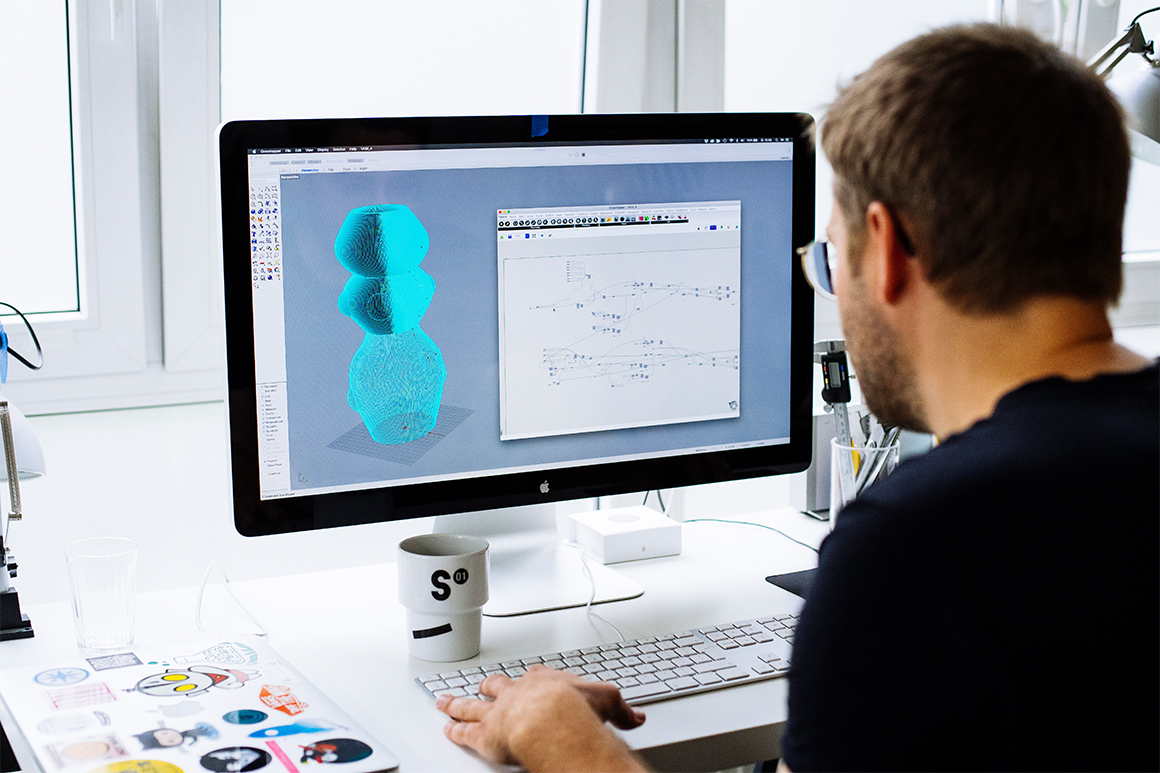
What is the key to good design?
J: I think you have to be honest with yourself and believe in yourself. Then try to do what you think is good, don’t compromise too much and there you go.
Tell us about your studio – how long have you been here and how would you describe its particular interior style?
J: We’ve been here for 3 years. We love this space as its very bright with high ceilings and huge, dirty (!) windows. It’s also quite big so we can create lots of experiments.
M: At first it really had no style, now when we have time we try to add some bits and pieces to make it more appealing.
How does your Tylko shelving work within your studio? How has it changed your space?
J: It’s really amazing, we can put all our designs there and everyone visiting our studio can see it altogether. It’s organised our space perfectly. In the drawers we keep additional parts to some designs, it’s really perfect for us. And it looks great.
M: Yes it really is what changed our studio 🙂
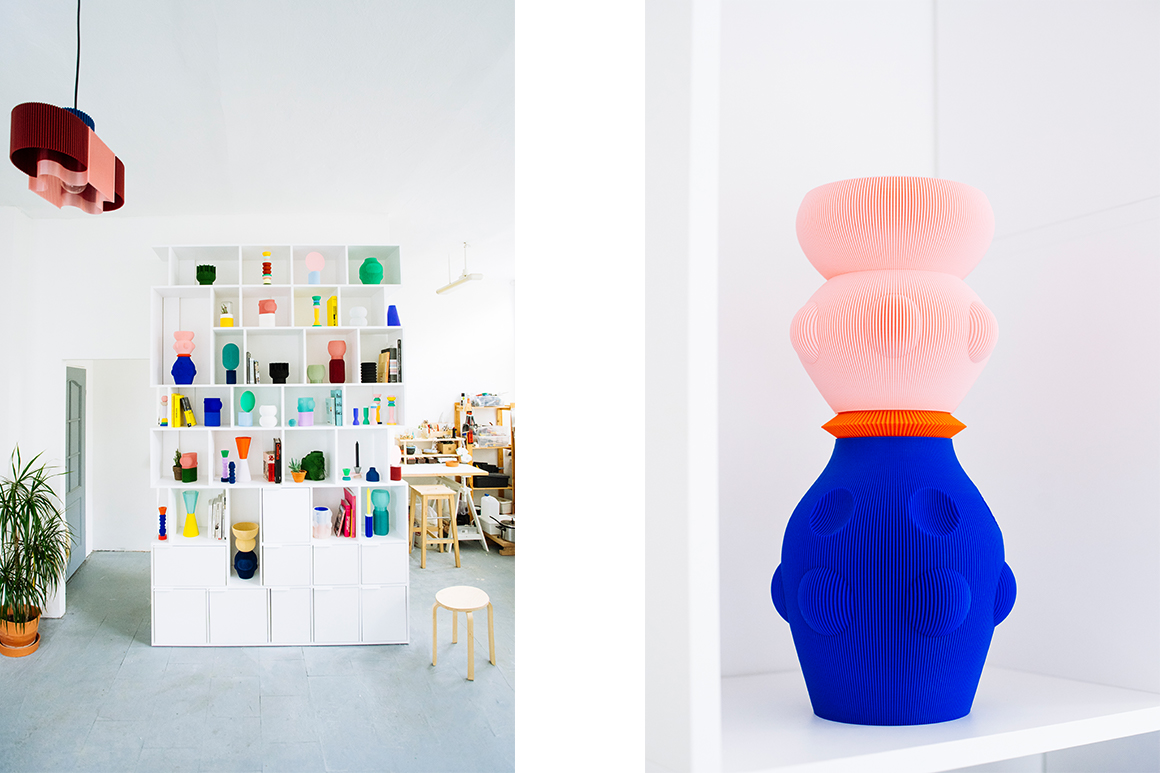
What are your favourite locations (shops, restaurants, galleries…) for anyone visiting Warsaw?
J: I think it’s best to take a bike and just go ahead. The city is beautiful and very surprising. We are vegetarians so we are very happy that it’s really easy not to eat meat in Warsaw and never go hungry 🙂 We usually eat at Local Vegan Bistro or Oh My Pho, but on special occasions we choose Ale Wino.
Are you collectors and if so, of what?
J: Yes, we collect glass, mostly Czech and ceramics especially Bertoncello vases from the 70’s.
What does “home” mean to you?
J: It’s a space which you share with family and the best people, where you put all those lovely objects, listen to good music and talk to friends for many, many hours.
What are you currently working on?
J: We are now working on objects in which we play with gradient, translucency and texture.
M: They’re really fun to design. We’re preparing them for the Dutch Design Week.
